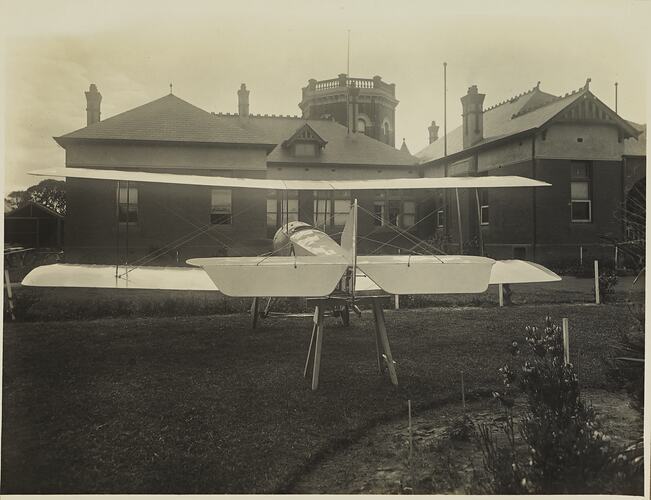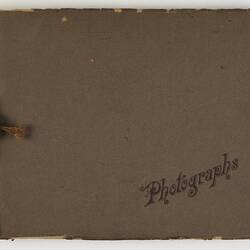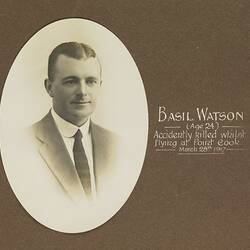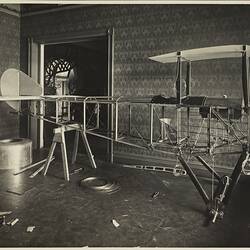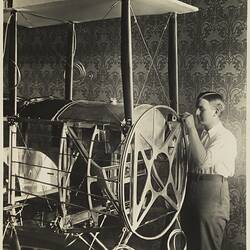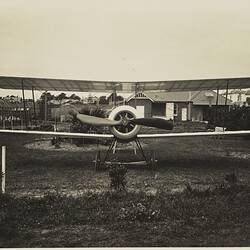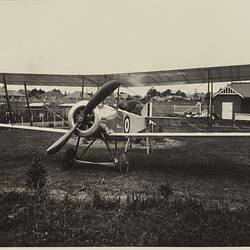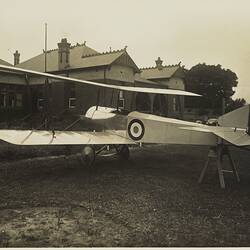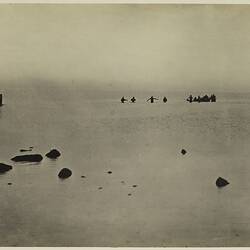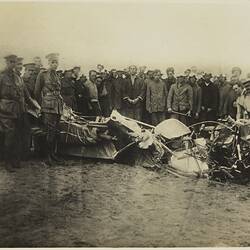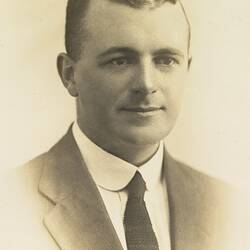Summary
Part of a commemorative photograph album produced by Sears' Studios, Melbourne, documenting the work of Basil Watson in constructing a biplane at his family's home 'Foilacleugh' in Elsternwick, Victoria, during 1916, and the aftermath of his fatal crash off Point Cook on 28th March 1917. The biplane was based on the design of the Sopwith Pup, which Watson was familiar with from his time working as an engineer and test pilot with the Sopwith Aviation Co. and Imperial Army in Britain, during 1914-1916. Watson piloted the plane on pioneering flights to Bendigo and western Victoria. He performed many public acrobatic flying demonstrations and flew the first official airmail between Mt Gambier and Melbourne in February 1917. He was killed when a component of his aircraft failed during an aerobatic demonstration over Point Cook, Victoria, on 28th March 1917, causing the wings to collapse, plunging the aircraft into Port Phillip Bay. His death was the earliest recorded aviation fatality in Australia. His death deeply affected the Watson family, who continued to publish tribute notices in Melbourne's daily newspapers on each anniversary for over a decade.
Description of Content
Square on rear view of Basil Watson's completed Sopwith-type biplane on the lawn behind the Watson family home 'Foilacleugh' in Elsternwick, Victoria. The rear of the fuselage is propped up on a wooden saw horse. In the background can be seen the back of the the Watsons' house, including the octagonal observation tower which looked out over Port Phillip Bay and the surrounding suburbs of North Brighton, Elsternwick and St Kilda, and at right, the rear of the kitchen and servants' quarters.
Physical Description
Horizontal landscape format rectangular gelatin silver emulsion photographic print, glued to a rectangular landscape format brown cardridge paper page, without caption.
More Information
-
Collection Names
-
Collecting Areas
Transport, Home & Community, Images & Image Making, Public Life & Institutions
-
Creator
Sears Studio, Melbourne, Greater Melbourne, Victoria, Australia, 1916
It is not clear whether Sears took all of the original negatives but they appear to have at least printed the photographs in a standard format and mounted them in the commemorative album. -
Place & Date Depicted
'Foilacleugh', St Kilda Street, Elsternwick, Greater Melbourne, Victoria, Australia, 1916
-
Format
Photograph, 8" x 6", Black & White
-
Classification
-
Category
-
Discipline
-
Type of item
-
Image Dimensions - Photograph
208 mm (Width), 160 mm (Height)
Landscape format. Dimensions including 3 mm white border.
-
Keywords
Aero Engines, Aviation, Aviation Pioneers, Aircraft, Aircraft Manufacture, Biplanes, Chimneys, Civilian Aviation, Houses, Domestic Gardens, Roofs, Verandahs, Front Yards
